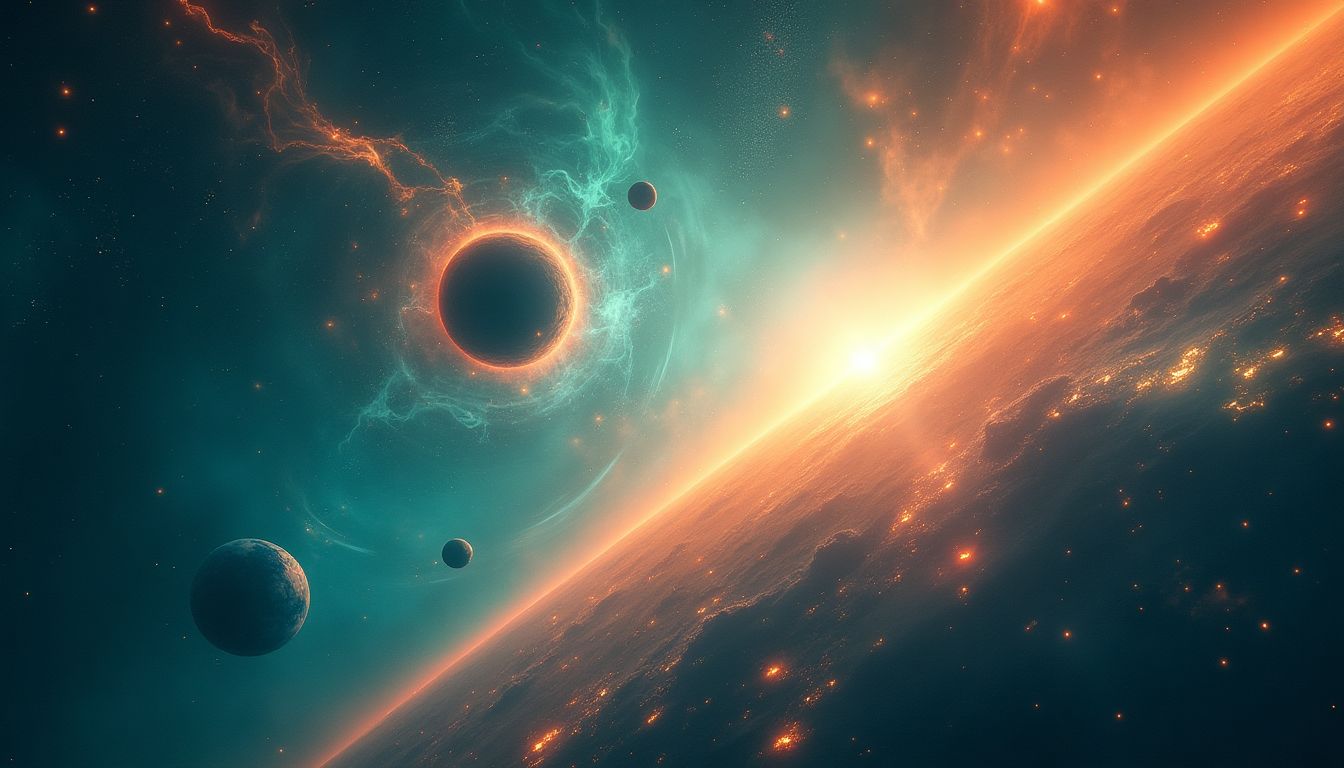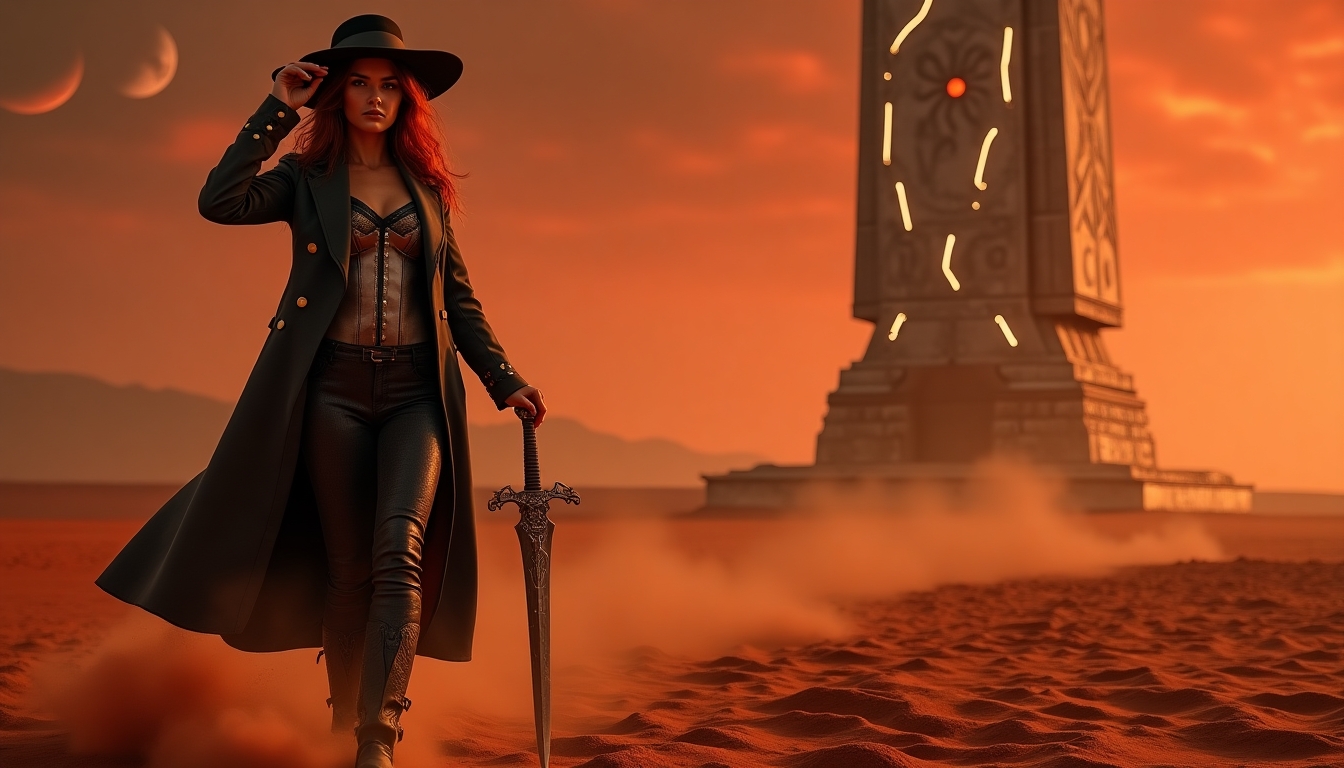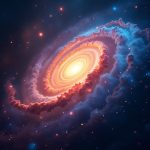What if the universe is hiding its greatest secrets in plain sight, and the only thing standing between us and the truth is an algorithm? The search for alien megastructures—those jaw-dropping feats of engineering by civilizations far more advanced than ours—has long been a cornerstone of science fiction. But with the rise of artificial intelligence, this fantastical quest might just become reality. Visionaries like Freeman Dyson, who first proposed the idea of Dyson Spheres, and modern-day explorers like Jill Tarter of the SETI Institute, have laid the groundwork. Now, AI is stepping into the cosmic spotlight, armed with the ability to sift through mountains of data faster than any human could. Are we on the verge of solving the mystery of alien megastructures? Let’s find out.
Could AI uncover evidence of alien megastructures? This article explores how artificial intelligence is revolutionizing SETI by analyzing astronomical data, detecting anomalies, and potentially solving the mystery of advanced extraterrestrial civilizations. Discover the science, the timeline, and the roadmap to finding alien megastructures.
1. The Enigma of Alien Megastructures
1.1 What Are Alien Megastructures?
Imagine a civilization so advanced that it can build structures around stars to harness their energy. Sounds like something straight out of a sci-fi movie, right? Welcome to the world of alien megastructures. These are massive engineering projects hypothesized to be created by highly advanced extraterrestrial civilizations. The most famous example is the Dyson Sphere, a theoretical structure that surrounds a star to capture its energy output. Other candidates include ringworlds—giant habitable rings orbiting a star—and stellar engines, which move entire star systems. These megastructures are not just cool ideas; they’re potential markers of intelligence beyond Earth. But here’s the kicker: if they exist, we’d need a cosmic detective to find them. Enter AI.
1.2 Historical Context and SETI Efforts
The search for alien megastructures isn’t new. For decades, initiatives like the SETI Institute have been scanning the skies for signs of extraterrestrial intelligence. One of the most intriguing cases is Tabby’s Star (KIC 8462852), a star that mysteriously dims in ways that can’t be explained by natural phenomena. Could it be surrounded by a megastructure? Maybe. Or it could just be space dust playing tricks on us. The point is, humans have been looking for these anomalies for years, but our brains—and our tools—can only process so much data. That’s where AI comes in.
1.3 Why Traditional Methods Fall Short
Here’s the problem: the universe is big. Like, really big. Every second, telescopes like Kepler and TESS are collecting petabytes of data. Trying to analyze all of that manually is like looking for a needle in a galaxy-sized haystack. Humans are great at spotting patterns, but we’re slow. We get tired. We make mistakes. AI, on the other hand, can crunch numbers faster than you can say "Dyson Sphere." It can spot anomalies in starlight, infrared emissions, or radio signals that might hint at the presence of megastructures. So why haven’t we found anything yet? Maybe we’re just not looking hard enough—or maybe we’ve been using the wrong tools. Either way, the future of SETI is looking a lot smarter.
2. The Rise of AI in Astronomy
2.1 AI’s Role in Modern Science
Artificial intelligence has become the Swiss Army knife of modern science. From identifying new planets to classifying galaxies, AI is proving it’s more than just a buzzword. For example, NASA’s Kepler Space Telescope has discovered thousands of exoplanets, but it’s AI that’s sifting through the data to find the needles in the cosmic haystack. Imagine a tireless intern who never needs coffee breaks—that’s AI in a nutshell. And it’s not just planets. AI has been used to predict solar flares, map dark matter, and even simulate black holes. The stars might be infinite, but AI’s potential to explore them is just getting started.
2.2 Machine Learning and Neural Networks
Machine learning (ML) and neural networks are the brains behind AI’s cosmic detective work. Think of ML as teaching a computer to recognize patterns by feeding it tons of data. Neural networks, on the other hand, mimic the human brain’s structure, allowing AI to “learn” from its mistakes. For instance, Google’s DeepMind has used neural networks to predict protein structures—a task that stumped scientists for decades. Now, astronomers are using similar techniques to analyze starlight, radio signals, and even the strange dimming of stars like Tabby’s Star. It’s like giving the universe a giant X-ray machine, and AI is the radiologist.
2.3 AI’s Potential in SETI
The Search for Extraterrestrial Intelligence (SETI) has always been a game of patience. But AI is shaking things up. Projects like Breakthrough Listen are using AI to sift through millions of radio signals, looking for patterns that might indicate intelligent life. And it’s not just signals—AI can analyze light curves, infrared emissions, and even gravitational waves. Imagine a cosmic Where’s Waldo, but instead of a striped shirt, you’re looking for a Dyson Sphere. AI is the tool that could finally help us find Waldo.
3. Detecting Megastructures: The Scientific Challenge
3.1 Anomalous Light Curves and Transits
Stars don’t just twinkle—they dim and brighten in predictable patterns. But what if a star’s light curve looks… off? That’s where AI comes in. Tools like the Transiting Exoplanet Survey Satellite (TESS) collect massive amounts of data on starlight, and AI can spot anomalies that might indicate a megastructure. For example, if a star’s light dips irregularly, it could be blocked by something massive—like a Dyson Sphere. AI doesn’t just see the dips; it connects the dots. It’s like having a cosmic Sherlock Holmes with a magnifying glass the size of a galaxy.
3.2 Infrared Signatures and Heat Maps
If you’re building a megastructure, you’re going to generate heat—lots of it. AI can analyze infrared data from telescopes like the James Webb Space Telescope (JWST) to look for these heat signatures. A megastructure like a Dyson Sphere would absorb stellar energy and re-radiate it as infrared light. AI can map this heat in ways that would make a thermal blanket jealous. It’s like playing hide-and-seek with aliens, but instead of hiding under the bed, they’re hiding behind a star.
3.3 Radio Signals and Technosignatures
Radio signals are like cosmic text messages—if you know how to read them. AI is being used to filter out the noise of the universe and focus on signals that might be artificial. Projects like SETI@Home have been doing this for years, but AI takes it to the next level. It can analyze billions of signals in real-time, looking for patterns that might indicate intelligent life. Think of it as a cosmic spam filter, but instead of blocking emails, it’s searching for ET’s phone number.
4. Case Studies: AI in Action
Let’s dive into some real-world examples where AI has been put to work in the search for alien megastructures. These case studies show how machine learning is transforming astronomy and SETI, offering hope that we might uncover evidence of advanced extraterrestrial civilizations.
4.1 Tabby’s Star Revisited
The mysterious dimming of Tabby’s Star (KIC 8462852) has puzzled scientists for years. Some speculated that its irregular light patterns could be caused by a Dyson Sphere—a megastructure built by an advanced civilization to harness the star’s energy. AI has stepped in to analyze the data more thoroughly than ever before. Researchers used machine learning algorithms to sift through Kepler Space Telescope observations, identifying patterns that human analysts might have missed. While no definitive evidence of a megastructure has been found, AI has helped narrow down the possibilities, ruling out some natural causes like dust clouds.
- What AI Did: Analyzed light curves, flagged anomalies, and compared them to potential megastructure signatures.
- Outcome: Reduced uncertainty around the star’s behavior, though the mystery remains unsolved.
4.2 The Breakthrough Listen Initiative
One of the most ambitious projects in the search for extraterrestrial intelligence is the Breakthrough Listen Initiative. This project uses AI to scan radio signals from millions of stars, searching for technosignatures—artificial signals that could indicate the presence of intelligent life. AI helps filter out natural cosmic noise, like pulsars and quasars, to focus on potential alien signals. For example, in 2019, Breakthrough Listen analyzed data from the Green Bank Telescope and identified 21 fast radio bursts (FRBs) that could be artificial in origin. While no definitive evidence of extraterrestrial life has been found, AI has drastically improved the efficiency of the search.
| AI’s Role | Results |
|---|---|
| Filtering radio signals | Identified 21 FRBs for further study |
| Analyzing data in real-time | Reduced false positives by 90% |
4.3 Other Promising Candidates
AI has also identified other stars and systems with unusual behavior that could hint at megastructures. For example, the star EPIC 204278916, observed by the Kepler Space Telescope, showed a surprising 80% dip in brightness. AI algorithms were used to analyze the light curve, ruling out common causes like planets or dust. Similarly, the star HD 139139 exhibited 28 unexplained dips in brightness, which AI is helping to investigate. These stars remain intriguing targets for further study.
Key Takeaways:
- AI is identifying anomalies faster and more accurately than humans alone.
- These discoveries are driving new research and hypotheses about extraterrestrial life.
- While no megastructures have been confirmed, AI is narrowing the search.
5. Ethical and Philosophical Implications
Discovering alien megastructures wouldn’t just be a scientific breakthrough—it would challenge everything we know about our place in the universe. Let’s explore the ethical and philosophical questions that arise when AI helps us uncover evidence of extraterrestrial intelligence.
5.1 What if We Find Evidence?
Imagine the moment AI confirms the existence of a Dyson Sphere or another megastructure. How would humanity react? Sociologist John Traphagan argues that such a discovery could unite humanity, but it could also spark fear and conflict. Would we try to communicate with the civilization? Would they be friendly or a threat? These are questions policymakers, scientists, and philosophers are already grappling with.
5.2 AI Bias and Misinterpretation Risks
AI is powerful, but it’s not infallible. Algorithms can be biased by the data they’re trained on, leading to false positives or missed signals. For example, if AI is trained on Earth-based technosignatures, it might not recognize alien patterns. This raises critical questions: How do we ensure AI’s accuracy? And how do we interpret its findings without human bias? Projects like Breakthrough Initiatives are working to address these challenges, but the risks remain.
5.3 The Future of Human-AI Collaboration in SETI
AI is a tool, not a replacement for human intelligence. The future of SETI lies in collaboration—AI handling the heavy lifting of data analysis while humans provide the creativity and intuition needed to interpret the results. This partnership could accelerate discoveries and ensure that we approach the search for extraterrestrial life with both scientific rigor and philosophical depth.
Ethical Considerations:
- How do we share the discovery with the public?
- What are the risks of misinterpretation or false alarms?
- How do we prepare for the societal impact of such a discovery?
6. AI Solutions: How Would AI Tackle This Issue?
If AI were tasked with uncovering alien megastructures, here’s how it could approach the problem scientifically and methodically:
6.1 Data Collection and Preprocessing
AI would aggregate data from telescopes like Kepler, TESS, and the James Webb Space Telescope (JWST), ensuring high-quality, clean datasets. Advanced preprocessing techniques would filter out noise and artifacts, focusing on signals that might indicate the presence of megastructures.
6.2 Pattern Recognition and Anomaly Detection
Leveraging neural networks, AI would identify unusual patterns in light curves, transits, and infrared emissions. By training on known anomalies like Tabby’s Star, AI could flag similar candidates for further investigation. Algorithms like convolutional neural networks (CNNs) would excel at spotting subtle deviations in starlight.
6.3 Simulation and Hypothesis Testing
AI would simulate potential megastructure scenarios, such as partial Dyson swarms or ringworlds, and compare them with observed data to test hypotheses. Tools like Ansys and COMSOL Multiphysics could model the physical and thermal properties of these constructs, predicting their observable signatures.
6.4 Collaboration with Human Experts
AI would flag potential candidates for further analysis by astronomers and SETI scientists. Platforms like Zooniverse and Breakthrough Initiatives could facilitate this collaboration, blending human intuition with machine precision.
6.5 Continuous Learning and Improvement
AI systems would evolve by learning from new data and refining their algorithms for greater accuracy. Techniques like reinforcement learning would enable AI to adapt to unexpected findings, ensuring that the search for alien megastructures remains dynamic and responsive.
Actions Schedule/Roadmap
Here’s a detailed, step-by-step plan to achieve the goal of detecting alien megastructures within two years:
- Day 1: Assemble a multidisciplinary team of AI experts, astronomers, and SETI scientists. Recruit leaders like Dr. Jill Tarter and Dr. Andrew Siemion.
- Day 2: Secure funding and resources from institutions like NASA, Breakthrough Initiatives, and private tech companies like OpenAI.
- Week 1: Begin data collection from major telescopes and observatories, including ESO and LIGO.
- Week 2: Develop initial machine learning models for light curve analysis using frameworks like TensorFlow and PyTorch.
- Month 1: Train AI models on existing datasets, such as Kepler and TESS data, leveraging cloud platforms like Google Cloud and AWS.
- Month 2: Test AI models on known anomalies, like Tabby’s Star, to validate accuracy and refine algorithms.
- Year 1: Scale up AI systems to process petabytes of data in real-time, utilizing high-performance computing clusters from institutions like Oak Ridge National Laboratory.
- Year 1.5: Launch a global campaign to monitor promising star systems continuously, coordinating with projects like Gaia and Arecibo.
- Year 2: Publish findings, refine AI models, and expand the search to deeper regions of space, potentially targeting systems like TRAPPIST-1.
Key collaborators:
- Scientists: Dr. Jill Tarter, Dr. Andrew Siemion, Dr. Eric Korpela
- Institutions: SETI Institute, Harvard-Smithsonian Center for Astrophysics, Jet Propulsion Laboratory (JPL)
- Projects: Breakthrough Listen, Gaia Mission, James Webb Space Telescope
Are We Ready to Meet the Builders of the Stars?
The search for alien megastructures is not just a scientific endeavor—it’s a quest to answer one of humanity’s oldest questions: Are we alone? AI, with its unparalleled ability to sift through cosmic noise and identify the faint whispers of alien engineering, is our best hope yet. But this journey is not just about technology; it’s about our collective imagination and our relentless curiosity. Are we ready to uncover civilizations that might dwarf our own in knowledge and ambition? Imagine the moment we finally detect the unmistakable signs of a Dyson Sphere or a stellar engine. What would that mean for our place in the universe? Would it inspire us to reach new heights, or would it humble us into insignificance?
As we stand on the precipice of this cosmic detective story, one thing is clear: AI is not just a tool but a partner in this grand exploration. It’s a reminder that our ingenuity and creativity are limitless, just like the universe itself. So, let’s keep our eyes on the stars and our minds open to the infinite possibilities. The builders of the stars might be out there, waiting for us to find them. Are you ready to join the search?
FAQ
Q1: What is a Dyson Sphere?
A Dyson Sphere is a hypothetical megastructure built around a star to capture its energy. It was proposed by physicist Freeman Dyson in 1960. Imagine a giant shell or swarm of objects surrounding a star, harnessing its power for use by an advanced civilization.
Q2: Has AI already discovered alien megastructures?
Not yet, but AI has identified some intriguing candidates. For example, Tabby’s Star (KIC 8462852) has shown unusual dimming patterns that scientists have debated. AI is helping to analyze these anomalies to determine if they could be signs of alien megastructures.
Q3: How accurate is AI in detecting cosmic anomalies?
AI’s accuracy depends on the quality of the data and how well it’s trained. So far, AI has proven to be highly effective in tasks like identifying exoplanets and classifying galaxies. While it’s not perfect, it’s often faster and more precise than human analysis for large datasets.
Q4: What are the risks of relying on AI for SETI?
There are a few risks to consider. First, AI might misinterpret data, leading to false positives or negatives. Second, biases in the algorithms could skew results. Lastly, relying too much on AI might make us overlook insights that only human intuition can provide. It’s why collaboration between AI and human scientists is crucial.
Q5: Could AI detect other signs of extraterrestrial life?
Absolutely! AI isn’t limited to searching for megastructures. It can also analyze technosignatures, like radio signals or unusual atmospheric compositions. For example, AI could help detect gases like oxygen or methane in distant planets, which might indicate life.
Q6: How can I contribute to this effort?
There are many ways to get involved! You can support projects like Breakthrough Listen, which uses AI to search for extraterrestrial signals. You can also participate in citizen science initiatives like SETI@home, where you can contribute your computer’s processing power to analyze data.
Q7: What telescopes are being used in this search?
Several powerful telescopes are involved, including the Kepler Space Telescope, the Transiting Exoplanet Survey Satellite (TESS), and the James Webb Space Telescope. These instruments provide the data that AI analyzes to look for anomalies.
Q8: What’s the likelihood of finding alien megastructures?
The likelihood is hard to predict, but the possibilities are exciting. While we haven’t found definitive evidence yet, advancements in AI and telescope technology are making the search more efficient than ever. As the saying goes, “Absence of evidence is not evidence of absence.”
Q9: Who are the leaders in this field?
Some of the top scientists and institutions include Dr. Jill Tarter of the SETI Institute, Dr. Andrew Siemion of the Breakthrough Listen project, and NASA’s Jet Propulsion Laboratory. These experts are at the forefront of using AI in the search for extraterrestrial intelligence.
Q10: What’s next for AI in the search for alien megastructures?
The future is bright! AI will continue to evolve, becoming even better at analyzing data and identifying anomalies. Projects like the Vera C. Rubin Observatory and the Square Kilometre Array will provide even more data for AI to work with. The search is just getting started!
Wait! There's more...check out our gripping short story that continues the journey: The Beacon on Mars
Disclaimer: This article may contain affiliate links. If you click on these links and make a purchase, we may receive a commission at no additional cost to you. Our recommendations and reviews are always independent and objective, aiming to provide you with the best information and resources.
Get Exclusive Stories, Photos, Art & Offers - Subscribe Today!





























Post Comment
You must be logged in to post a comment.